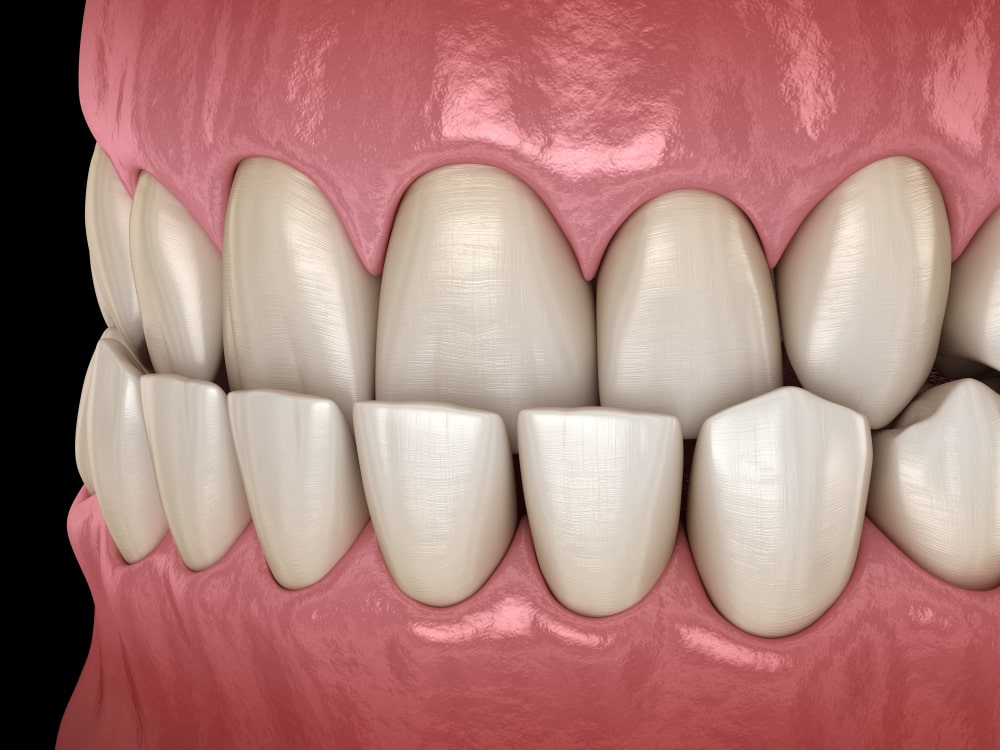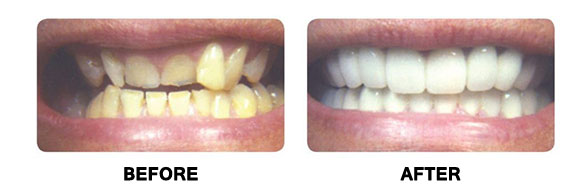Home » 4 Types of Malocclusion Fixed by Invisalign
With modern dental technology, orthodontic treatment is easier than ever. In the past, the main option for orthodontic treatment was metal brackets joined together with an arch wire. While this method was, and still is, highly effective, many people did not care for the look and feel of metal braces. For those reasons, an alternative solution was developed in the late 90s.
This solution, known as Invisalign, replaced metal brackets and wires with clear aligners. These clear aligners were customized for each patient in order to gradually reposition their teeth. Although the aligners themselves are removable, they must be worn for about 20-22 hours a day to be effective and should only be removed when eating, brushing, or flossing.
Many people seek Invisalign treatment as a way of straightening their teeth to improve the look of their smiles. However, what some may not realize is that Invisalign also has the potential to correct bite issues known as malocclusion. In addition to properly aligning the teeth, Invisalign can also potentially correct these four types of malocclusion:

If the top front teeth extend too far over your bottom front teeth, then it is known as an overbite. Overbites are also sometimes referred to as deep bites. Although most people have a slight overbite, anything over 25% is considered to be abnormal and should be corrected to prevent future dental issues. If not treated, overbites can cause premature tooth wear and jaw pain.
If you notice your upper teeth sitting behind your lower teeth when you close your mouth, then it is known as a crossbite. Crossbites are when both the top and bottom jaws are not aligning properly. Unfortunately, they can cause a range of dental issues such as premature tooth wear, gum recession, bone loss, and damage to the teeth such as chips or cracks. While Invisalign can work on some types of crossbite, it cannot always be used as an effective treatment in some cases.

If the front bottom teeth extend too far beyond the top front teeth, then it is known as an underbite. Underbites are generally caused by a mandible that extends too far forward. People with underbites have their teeth wear down faster, and may also have difficulty properly chewing or speaking due to the position of their lower jaw. While Invisalign treatment can correct underbites, there are some severe cases that may also require surgery.
If you close your mouth and your bottom teeth are not in contact with any of your bottom teeth, then this is known as an open bite. Open bites interrupt natural chewing function and can make it extremely difficult to bite into food. They can generally be corrected using Invisalign treatment to close the bite.
As you can see, Invsialign orthodontic treatment has the potential to correct four different types of malocclusion, including: overbite, underbite, crossbite, and open bite. This allows for the proper alignment of both your teeth and your bite, which will prevent future dental issues while also improving the look of your smile. To learn more and determine if Invisalign is the right treatment for you, schedule a consultation with your local Invisalign dentist.

Dr. Anthony Mancino is Monmouth and Ocean County New Jersey’s General and Cosmetic Dentist and has been practicing for over 25 years focusing on cosmetic and overall dental health. Dr. Mancino is a graduate of Villanova University and University of Pennsylvania. He is also a member of the American Dental Association, New Jersey Dental Association, Monmouth & Ocean County Dental Association, American Academy of Cosmetic Dentistry, and the Academy of General Dentistry.
After-Hours Emergencies Or Issues
Call 732-556-9600
Our Services
Dental Emergencies
General Dentistry
Cosmetic Dentistry
Restorative Dentistry
Full Mouth Reconstruction
Smile Makeover

3350 Route 138 W
Bldg 2, Ste 127
Wall Township, NJ 07719
(732) 556-9600
 3350 NJ-138 W. Bldg 2, Ste 127, Wall Township, NJ 07719
732-556-9600
Prices Vary
Comprehensive Dentistry -
5 star rating - based on 25+ reviews in Google
3350 NJ-138 W. Bldg 2, Ste 127, Wall Township, NJ 07719
732-556-9600
Prices Vary
Comprehensive Dentistry -
5 star rating - based on 25+ reviews in Google
